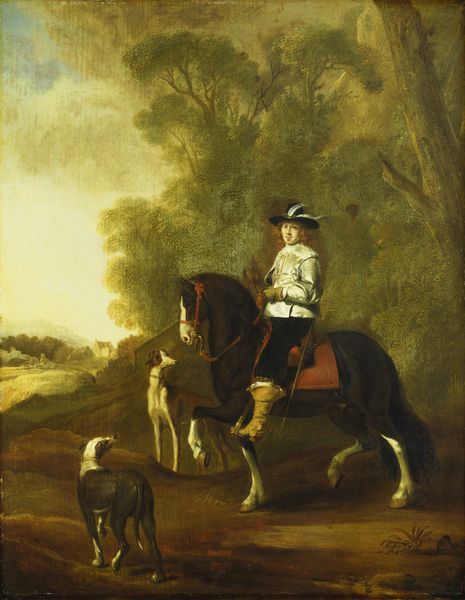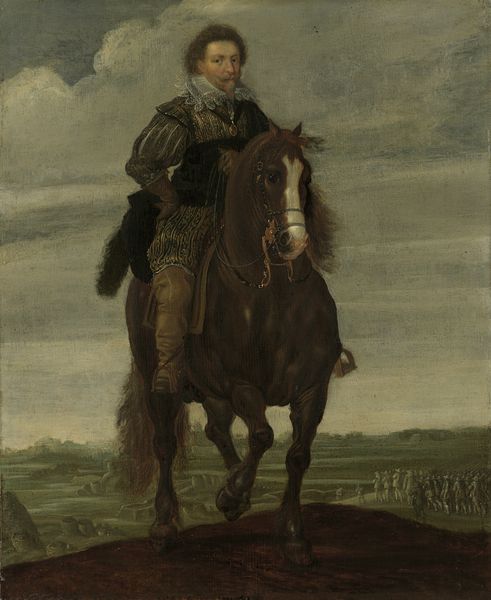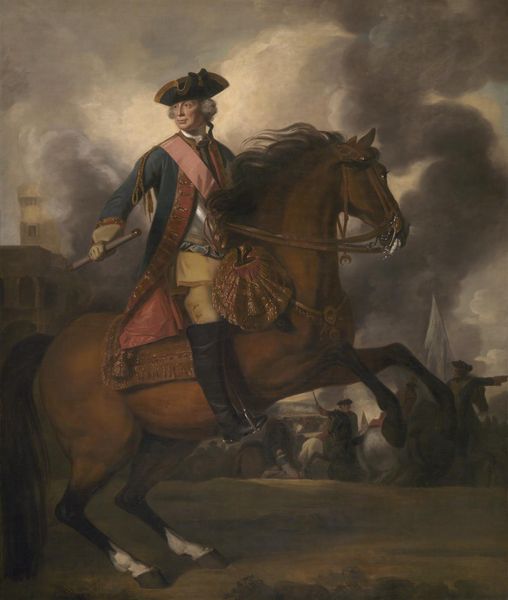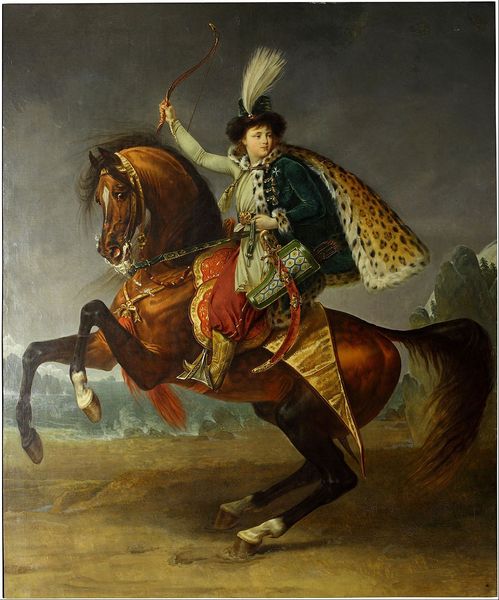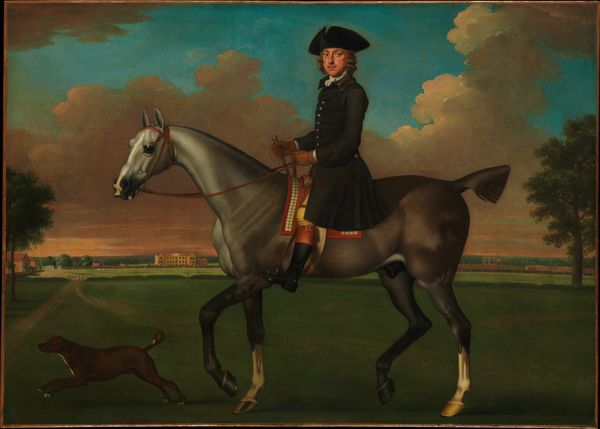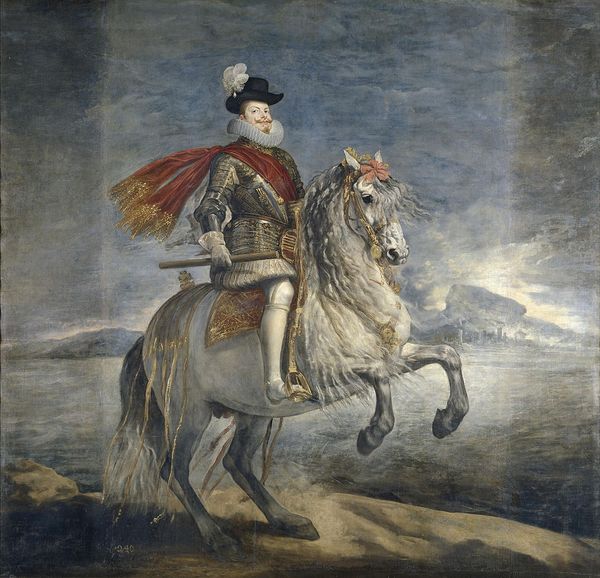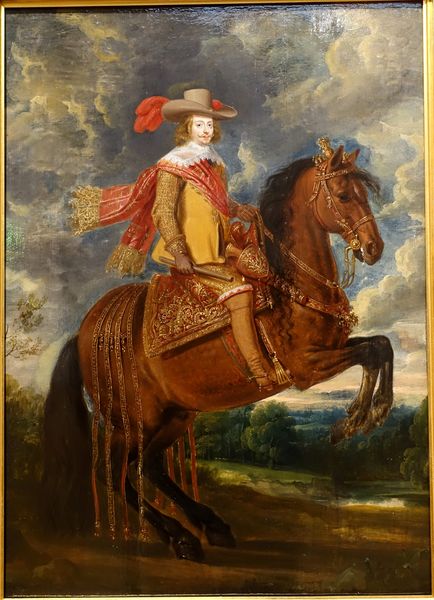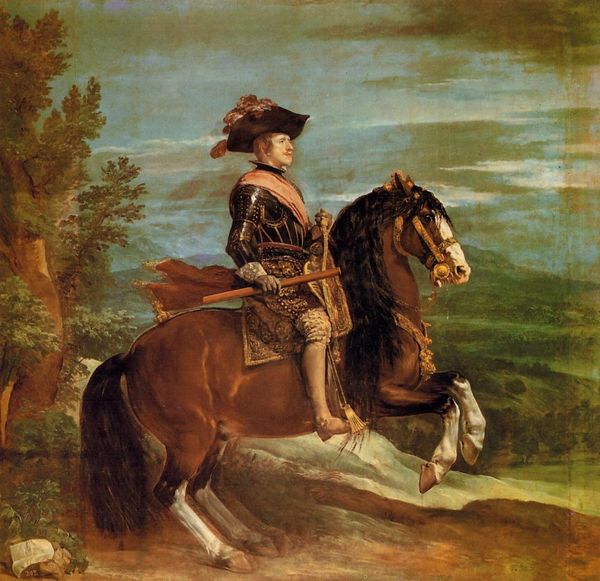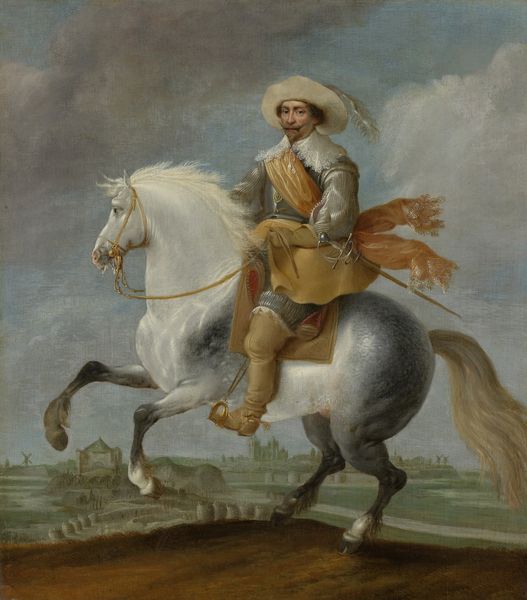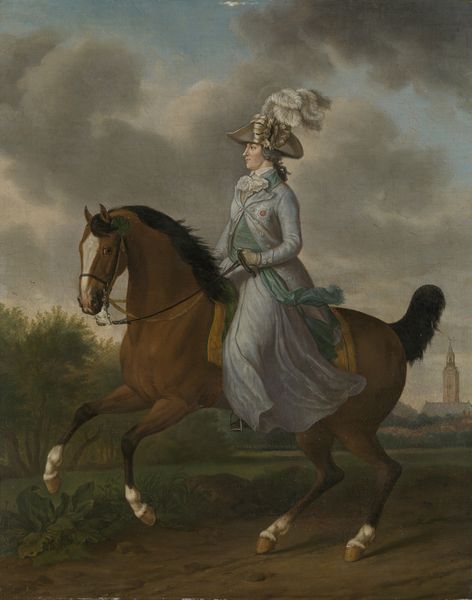
painting, oil-paint
#
portrait
#
baroque
#
painting
#
oil-paint
#
landscape
#
genre-painting
Dimensions: support height 86.1 cm, support width 69.6 cm, frame height 104.4 cm, frame width 89 cm, sight size height 82.8 cm, sight size width 67.2 cm
Copyright: Rijks Museum: Open Domain
Thomas de Keyser painted *Pieter Schout on Horseback* in the Dutch Republic, a nation undergoing significant social and economic transformation. This painting is a window into the values and aspirations of its emerging elite. Equestrian portraits had long been associated with royalty and the military aristocracy, but here in the Netherlands, it takes on a new meaning. Schout, a member of the wealthy merchant class, asserts his status through this traditional trope. Note the carefully rendered details of his clothing and tack, visual cues that signaled wealth and taste in Dutch society. The open landscape, devoid of explicit religious or aristocratic symbols, reflects the Republic’s emphasis on civic virtues and commercial success. Understanding the nuances of Dutch society at this time, the role of the merchant class, and the evolving function of art patronage can enrich our appreciation of this painting. Primary sources from the period, such as merchant inventories and civic records, can provide invaluable context. Only then can we fully grasp the complex interplay of social identity and artistic representation in De Keyser’s work.
Comments
rijksmuseum about 2 years ago
⋮
Equestrian portraits were traditionally the reserve of princes. Accordingly, in the Netherlands very few equestrian portraits were made, except for the court. Only a handful of burghers had themselves immortalized on horseback. Pieter Schout was one such citizen who assumed a princely air. He was bailiff – administrative officer – of Hagestein on the River Lek.
Join the conversation
Join millions of artists and users on Artera today and experience the ultimate creative platform.

